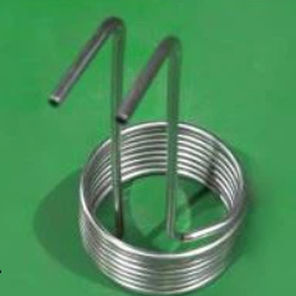
- Materials - Tools - Components
- Semi-finished products
- Titanium
- Shaanxi CXMET Technology Co., Ltd.
Titanium wire grade 2grade 5grade 3



Add to favorites
Compare this product
Characteristics
- Shape
- wire
- Type
- grade 2, grade 5, grade 3
- Diameter
Max.: 7 mm
(0.28 in)Min.: 0.1 mm
(0 in)
Description
Grade 5 titanium wire is a high-strength, high-corrosion-resistant titanium alloy material with excellent properties such as lightweight, biocompatibility, and fatigue resistance. It is widely used in aerospace, medical equipment, sports equipment, chemical and marine engineering, and other fields, such as aircraft structures, artificial joints, high-end bicycles, pipelines, and pump bodies, etc. In the future, with the continuous development of science and technology, titanium wire will play a greater role in more fields, bringing more convenience and security to people's life and work.
Grade 5 titanium wire is a titanium alloy material, its characteristics and applications are as follows
Characteristic
1. High strength: Grade 5 titanium alloy wire has high strength, which is higher than many conventional metal materials.
2. Corrosion resistance: It has excellent corrosion resistance and can operate stably in many chemical environments.
3. Lightweight: It has a low density and is nearly half lighter than steel, which can play a role in a lightweight design.
4. Biocompatibility: It has good biocompatibility to human tissues and is widely used in medical devices and artificial joints and other fields.
5. Fatigue resistance: It has good fatigue resistance and can be used in many high-strength and high-stress environments.
Application
1. Aerospace field: Grade 5 titanium wire is widely used in the aerospace field, such as aircraft structures, engine parts, gas turbine blades, etc.
Catalogs
No catalogs are available for this product.
See all of Shaanxi CXMET Technology Co., Ltd.‘s catalogsOther Shaanxi CXMET Technology Co., Ltd. products
Titanium Materials
*Prices are pre-tax. They exclude delivery charges and customs duties and do not include additional charges for installation or activation options. Prices are indicative only and may vary by country, with changes to the cost of raw materials and exchange rates.









